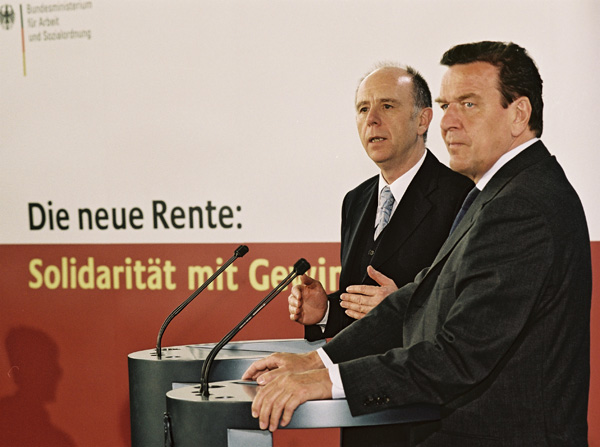













INTRODUCTION | DOCUMENTS | IMAGES | MAPS | EDITOR
|
Since the 1957 pension reform, German pensions have been financed on a pay-as-you-go basis. This means that contributions by active employees are used to pay benefits to current retirees. The aging of society, however, has made the pay-as-you-go system increasingly problematic, since a smaller number of employees must support a growing base of benefit recipients. To avoid raising pension contributions, which would have further compromised Germany's international competitiveness, the Schröder administration decided to gradually lower pension-benefit levels. In return, grants and tax breaks were introduced to encourage citizens to supplement their state benefits with voluntary private contributions. This program was called the “Riester pension” [Riester-Rente] after then minister of labor Walter Riester. Around 1.4 million policies were sold in 2003 alone, and by 2008 sales had reached 12.1 million. The Riester pension represented a paradigm shift toward greater personal responsibility – and thus marked a turning point in German national social policy. This photograph shows Chancellor Schröder (right) and Federal Labor Minister Walter Riester (left) presenting the “Riester pension” after the Bundesrat approved pension reform. Photo: Julia Fassbender.
REGIERUNGonline |
 print version
print version return to image list
return to image list previous image
previous image
